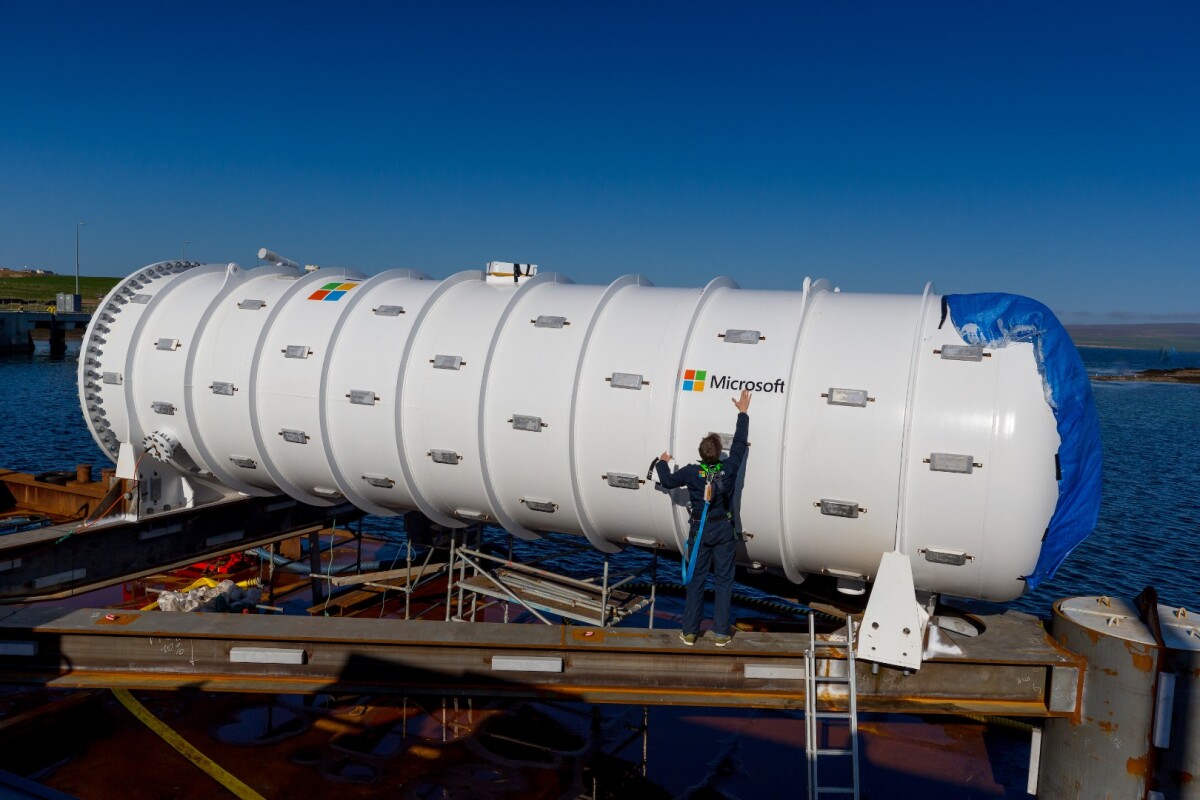Water-cooling systems have long been used to keep computers from overheating, but how do you scale that up for huge data centers? According to Microsoft, you drop the data center to the bottom of the ocean. As the second phase of its Project Natick, the company has just deployed a data center in the frigid waters off Scotland's Orkney Islands.
Cooling is one of the biggest costs of running a data center, so companies are coming up with some creative ways to keep the tech nicely chilled. Google set its DeepMind AI loose on the problem, while other companies have strategically built facilities in cold locations like the Arctic circle or beneath the fjords of Norway.
With Project Natick, Microsoft has been experimenting with submerging data centers deep beneath the ocean and pumping cold seawater through to keep them cool. In 2015, Phase 1 of the project saw a 10-ft (3-m) long prototype submerged off the coast of California for 105 days, which proved the feasibility of the concept.

Phase 2 was designed to test if the idea was practical in a logistic, environmental and economic sense. Microsoft partnered with a French marine manufacturing company called Naval Group, which designed the watertight cylindrical shell and adapted a commonly-used submarine cooling system to work with the data center.
Known as the Northern Isles data center, the new facility sits 117 ft (36 m) below the waves, measures 40 ft (12 m) long and contains 12 server racks loaded with a total of 864 servers. To cool them, seawater is piped through the radiators on the backs of the server racks, before being released back out into the ocean.

The center is connected to the world through a fiber optic cable and gets most of its power from the nearby Orkney Islands. Interestingly, 100 percent of the region's energy already comes from renewable sources, thanks to wind turbines, solar panels and more experimental sources such as tidal turbines and wave energy converters.
The team says the eventual goal of Project Natick is to have these underwater data centers be completely self-sustained, powered entirely through offshore wind, wave or tidal generators. In doing so, they could essentially be submerged near any coastal city where they're needed, and supply faster internet and cloud services.
This phase of Project Natick will see the team monitoring the Northern Isles data center for the next 12 months, keeping watch over its performance, power consumption, sound, humidity and temperature. This version is designed to work continuously down there for up to five years without needing maintenance.
You can see the Project Natick data center being submerged in the video below.
Source: Microsoft
















